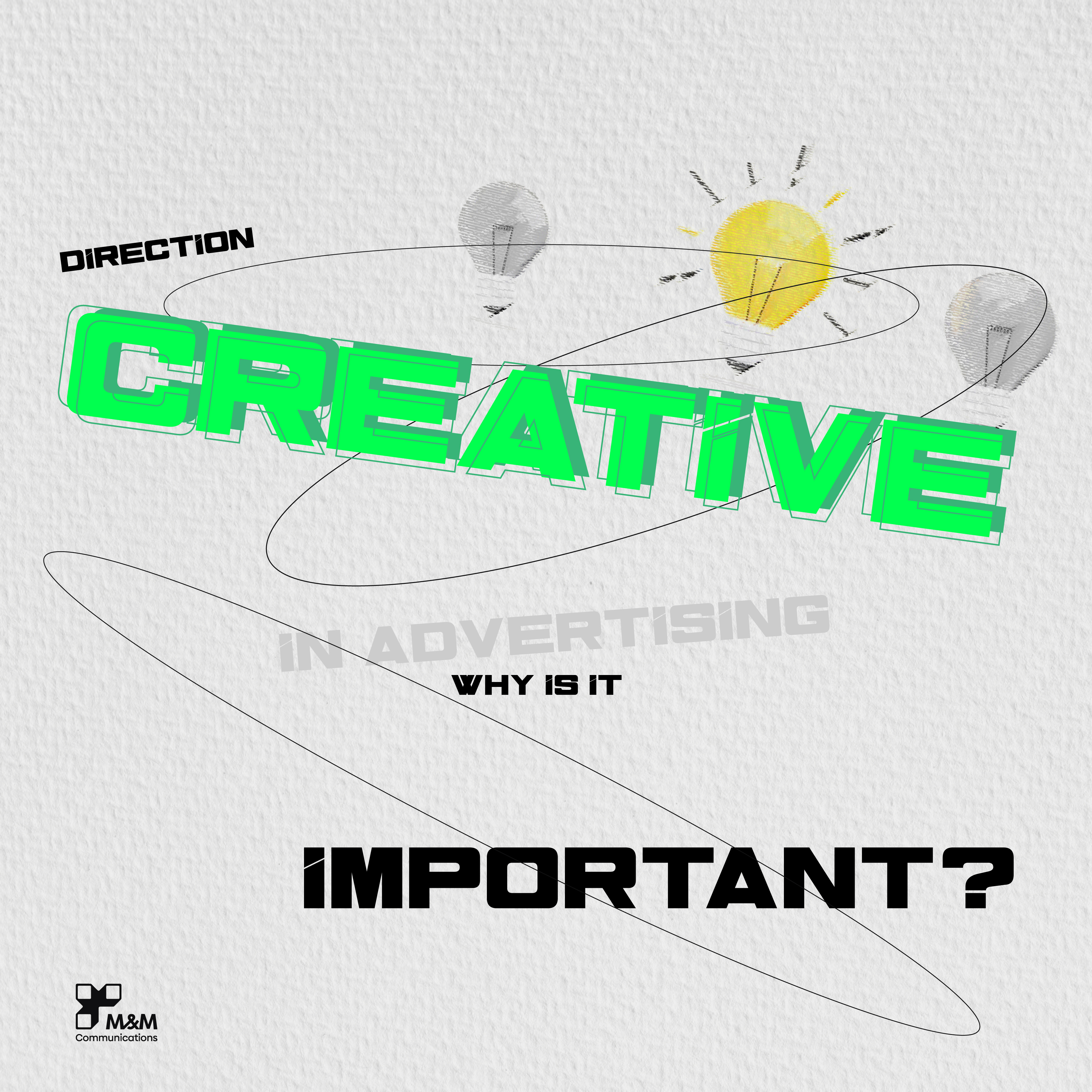
CREATIVE DIRECTION IN ADVERTISING: WHY IS IT IMPORTANT?
In our daily lives, we often encounter advertisements on television, in newspapers, or through social media platforms. Due to the sheer volume of advertisements we are exposed to each day, customers tend to remember those that are creative and captivating. So, how can businesses create such creative and engaging advertisements? What role does creative direction play in this? Let's explore these questions with M&M Communications in the following article.
What is Creative Direction?
In marketing, the concept of creativity is often associated with terms like Creative Content, Creative Designer, Creative Director, and others used for positions that require creative input in strategy, content, and imagery. But what exactly is creativity, and why is it important in marketing, especially in advertising?
What does Creativity entail?
We use the term "creativity" frequently in our daily communication, but do we truly understand its meaning?

According to Steve Jobs, creativity is simply connecting things. If you ask someone why their products are creative, they might not know exactly how they came up with them because they're just manifesting what they see in their world view.
Apart from Steve Jobs' view, there are many other perspectives on creativity. Generally, there's no single definition for "creativity," but it can be understood as a process of looking at the world from a fresh perspective to connect seemingly disparate elements and create something new and unique.
Concept of Creative Direction
In the agency world, creative direction or the creative brief is likened to the foundation that connects the agency and the client, helping both parties understand each other's ideas to develop the most effective strategies. Think of the creative brief as a treasure map in a game: it not only guides you to find the shortest path but also shows you the quickest way to unlock the treasure.

Simply put, creative direction is a blueprint outlining the key aspects of a client's creative product, aimed at ensuring the agency, particularly the creative team, develops marketing campaigns in the right direction.
The Role of Creativity in Advertising
Creativity plays a crucial role in nearly all forms of communication, advertising products, services, and business brands. So what is advertising, and what role does creativity play in it?
What is Advertising?
Advertising refers to promotional activities used to disseminate information about products, services, or brand images to the target audience. However, these are promotional activities for which businesses must pay.
A good advertisement has the ability to reach and positively influence the awareness and purchasing behavior of consumers.
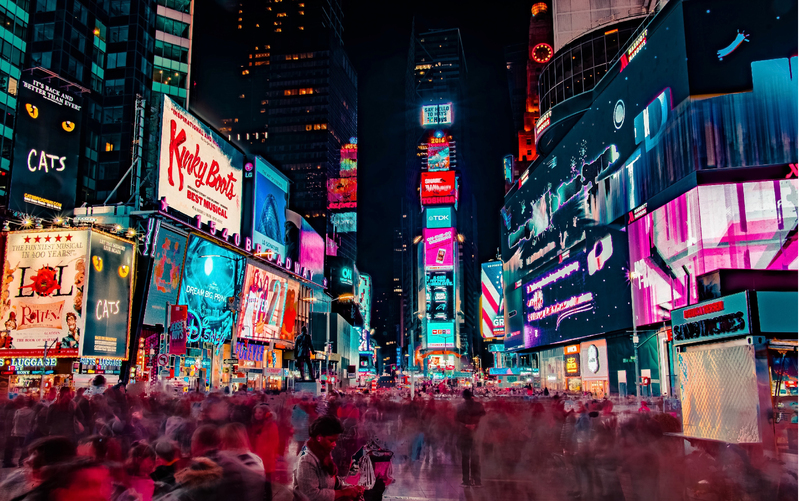
Creativity and its Intimate Relationship with Advertising
Through advertising activities, businesses can easily reach their target market and audience. This helps them sell more products and services while also developing their brand. However, for an advertisement to achieve all these goals, it must be both invested in and creative, as creativity and advertising have an intimate relationship.
Enhancing Brand Recall
Creativity can stimulate and enhance brand recall. An advertisement with compelling, distinctive, and unique content conveyed through images, sound effects, and language will quickly impress consumers. This helps them remember the product, service, and brand of the business.
Moreover, creative content in advertising that evokes emotions in readers directly contributes to making a lasting impression on the target audience. It helps them associate with the brand quickly when they have a need for the service.

Brand Mirinda has increased its brand recall by integrating a heartfelt and engaging Tet holiday story into its TV commercial, highlighted by a viral singing line across social media: "chuyện cũ mình bỏ qua, nào cùng cười lên ha ha".
Enhancing Competitive Edge
In addition to boosting brand recall, creativity in advertising helps businesses differentiate themselves from competitors, especially within the same industry.
A prime example is out-of-home (OOH) advertising. Even though the same location offers equal customer attraction and accessibility, when two advertisements from the same industry compete, the more unique, attractive, and impressive ad quickly gains consumer favor.
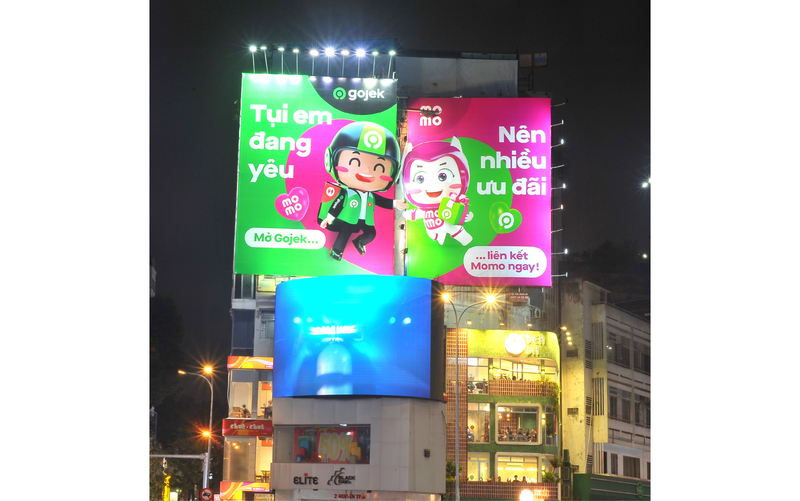
Utilizing the proximity of OOH placements to each other, many businesses opt to collaborate to make their advertising campaigns stand out together. A notable example is the synergistic OOH partnership between Momo and Gojek.
Increasing Advertising Effectiveness
The effectiveness of an advertising campaign is often measured against set objectives, particularly in terms of sales, market share, and profit. A persuasive advertisement with a creative or distinctive message can help businesses achieve a turnaround in revenue and market position.
A standout example is Biti’s remarkable success with their advertising campaigns spanning 7 Tet seasons (from 2017 to 2023). With the tagline "Đi để trở về" (Go to return), and a cleverly conveyed narrative that resonates with the unique perspective of young people, Biti’s commercials, especially during the first Tet season of the campaign, achieved significant engagement metrics, comments, and shares, surpassing the brand's KPI targets and achieving substantial sales success.

Some creative directions in advertising
Creativity in message delivery
The method of message delivery is one of the decisive factors in the effectiveness of an advertisement. Creativity in delivery is expressed through the following elements:
Color
Considered the factor that creates the "aura" of an advertisement, color helps attract viewers, grab attention, and interest them in the advertisement, creating memorability. Each color choice evokes different perceptions for viewers, so a creatively colored advertisement knows how to harmoniously combine color schemes.
Images
Images can be said to be the first and last factor that deeply imprints on viewers' minds regarding an advertisement. Therefore, images are a key element in creating the allure of an advertisement.
Fonts
Each font style has its own personality; there are fonts that convey masculinity, strength, while others express gentleness, femininity,... Each font style should align with the message and personality of the campaign and brand.
Music
There are various types of music that can be used to convey messages, depending on the content and style of the brand. Visually, consumers can recognize a brand through its logo and colors. With music, they can associate with the brand through auditory senses, and this association can be much stronger than visual cues.
Filming elements
Choosing the filming angle, using filming techniques and technology also contribute to making advertisements stand out. Changing angles such as close-up/far, detail/overall also contributes to creating attractive advertisements that captivate viewers.
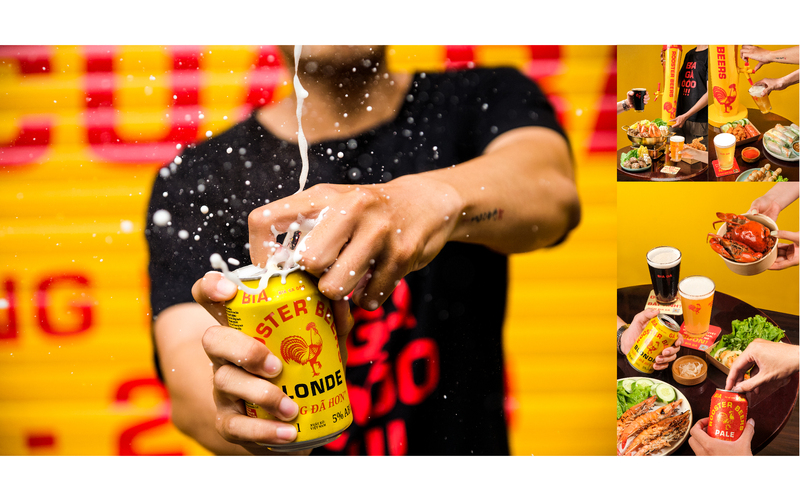
In the advertising strategy in collaboration with the craft beer brand Rooster Beers, M&M Communications combined elements of color, imagery, and creatively shot concepts to create advertisements that reflect the brand's characteristics and attract customers.
Creative content in advertising
Beyond just the external appearance, advertisements also require investment and creativity in content to attract the right target audience through the following elements:
Creating breakthrough information
Businesses need to explore and understand detailed information about their products, services to produce the most suitable and useful content for consumers. However, this information needs to be conveyed through breakthrough language and imagery in advertising to attract users.
Product description
Describing the product attractively and creatively will create appeal for the advertisement. A product that demonstrates attractiveness, meets customer needs, or generates interest and curiosity will captivate customers and make them feel that this is the product they need.
Assessing competitive situations
This step is crucial if a business wants to apply comparative advertising. Comparative ads are often presented indirectly and skillfully. For example, cases like Coca-Cola vs. Pepsi or Milo vs. Ovaltine have demonstrated clever executions of this type of advertising.
Benefits of the product for customers
Advertising doesn't always need to explicitly explain every function's benefit of a product, as long as the audience can implicitly understand what that feature's benefit is and they feel the product meets their needs. The content should be concise and streamlined, making it easier for consumers to pay attention to and remember.
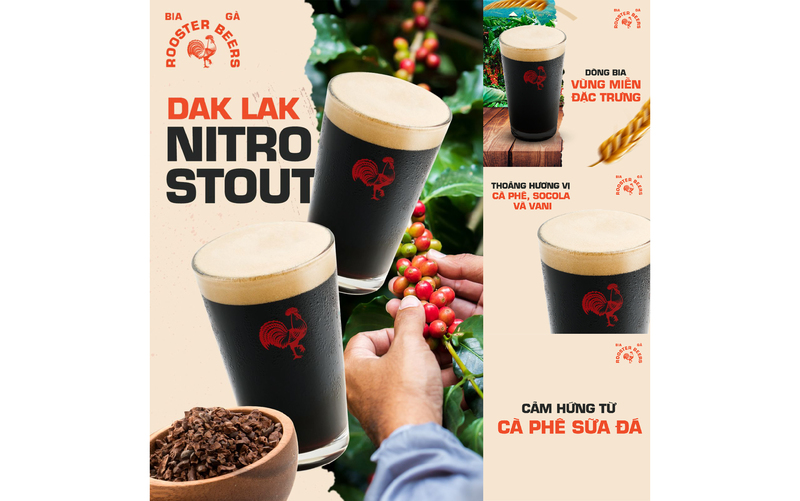
The visual content of Rooster Beers' product advertisements is optimized and refined to focus customers' attention on the important information.
If your business is seeking a partner to support creative direction in advertising, we at M&M Communications have extensive experience collaborating with numerous brands and businesses on impressive advertising campaigns. We are ready to consult and support you in producing an impactful advertisement from A to Z, reflecting the unique identity of your business.
Conclusion
Creativity is an essential concept in many fields, especially in media and advertising. A creative advertisement brings numerous benefits to businesses, not only in terms of brand recognition but also in revenue. Don't let your products, services, or brand be overlooked by customers just because of a lack of creative direction in advertising!
